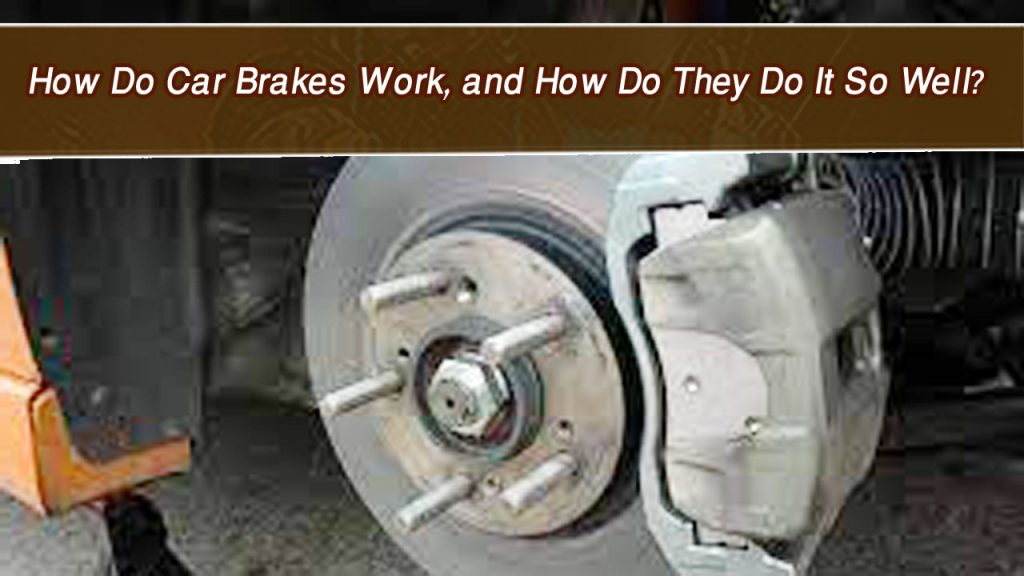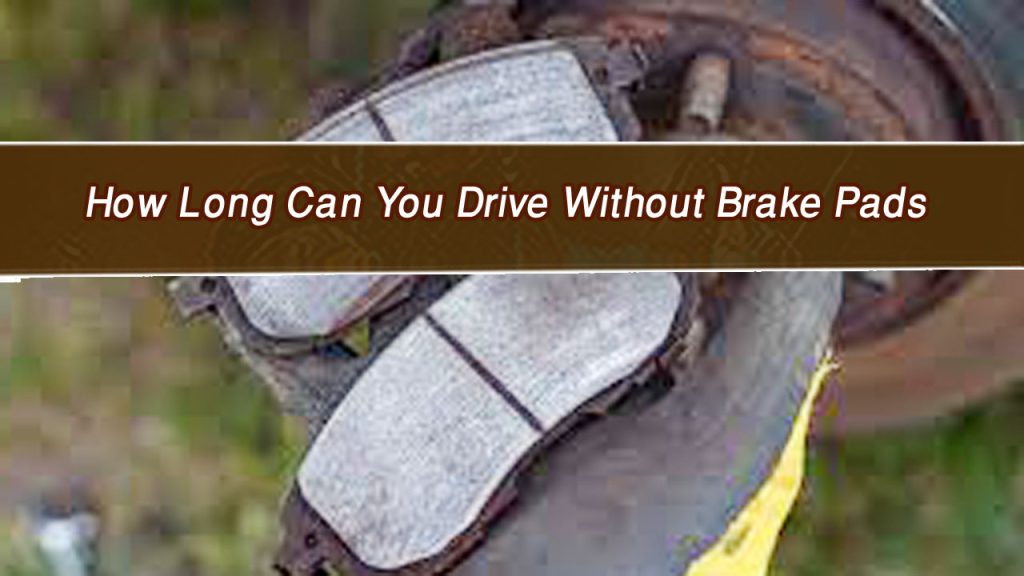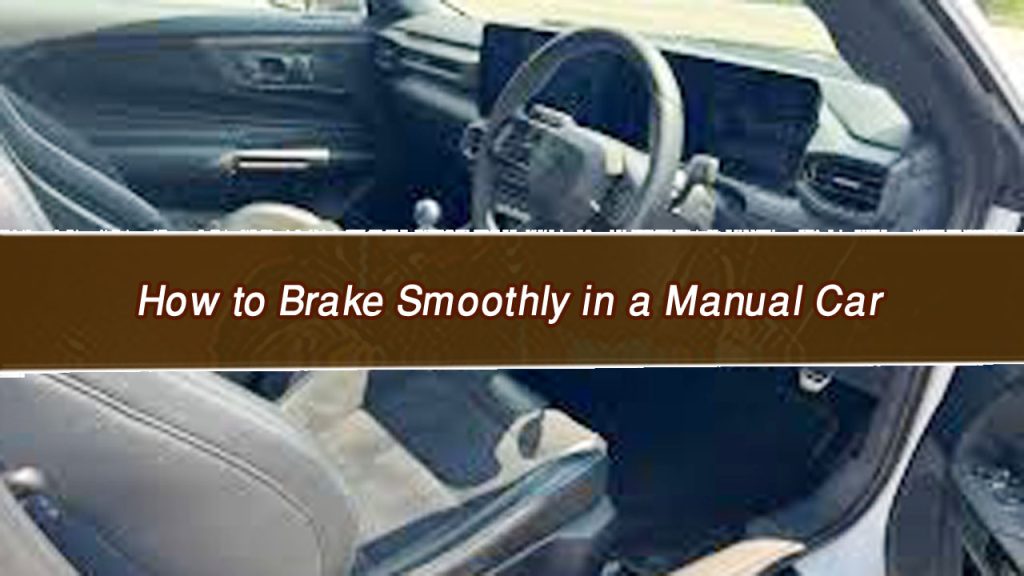Have you ever marveled at how a car can go from speeding down the highway to a complete stop in just seconds? It’s almost magical when you think about it. But the truth is, car brakes are one of the most well-engineered safety features on your vehicle. I’ve always been fascinated by how they work and why they’re so effective. So, if you’ve ever wondered what’s happening behind the scenes when you press the brake pedal, let me walk you through it.

Image by cars.com
Basics of How Car Brakes Work
At its core, a car brake system converts energy. When you press the brake pedal, the car’s kinetic energy (its motion) is transformed into heat energy, which slows the vehicle down. This process relies on friction, hydraulics, and some clever engineering.
Components of a Car Brake System
To understand how brakes work, you need to know the main parts involved:
- Brake Pedal: The starting point where you apply pressure.
- Master Cylinder: Converts the pressure from your foot into hydraulic force.
- Brake Lines: These carry brake fluid to transfer the hydraulic force.
- Brake Calipers: House the brake pads and clamp down on the rotor.
- Brake Pads: Create friction by pressing against the rotor.
- Brake Rotors: Metal discs that the pads squeeze to stop the wheels.
- Brake Fluid: A hydraulic fluid that transmits force throughout the system.
Understanding the Process Step by Step
Step 1: Pressing the Brake Pedal
It all begins when you press down on the brake pedal. This action pushes a piston inside the master cylinder, creating hydraulic pressure in the brake lines.
Step 2: Hydraulic Force Travels Through the System
The brake fluid in the lines is incompressible, meaning it efficiently transfers the force to the brake calipers without losing energy.
Step 3: The Brake Calipers Clamp the Rotor
When the hydraulic pressure reaches the brake calipers, they squeeze the brake pads against the rotors.
Step 4: Friction Slows the Wheels
The friction between the brake pads and rotors generates heat, dissipating the car’s kinetic energy and slowing the wheels.
Step 5: Bringing the Car to a Stop
As the friction continues to build, the car slows down until it comes to a complete stop.
Why Are Car Brakes So Effective?
Hydraulic Power
The hydraulic system amplifies the force from your foot. A light press on the brake pedal generates enough force to stop a heavy vehicle.
Friction Materials
Brake pads are made from advanced materials like ceramic or metallic compounds designed to withstand extreme heat and provide reliable stopping power.
Heat Dissipation
Brake rotors are engineered to dissipate heat quickly, preventing overheating and maintaining efficiency during heavy braking.
Precision Engineering
Modern brake systems are designed with safety and precision in mind, ensuring smooth and consistent performance.
Types of Brake Systems
Disc Brakes
Disc brakes are the most common type found in modern cars. They use a rotor and caliper mechanism to provide powerful and consistent braking.
Drum Brakes
Drum brakes are less common in newer vehicles but are still used on some rear wheels. They work by pressing brake shoes against the inside of a drum.
Anti-Lock Braking System (ABS)
ABS is an advanced system that prevents the wheels from locking up during hard braking, maintaining traction and control.
Comparing Disc and Drum Brakes
| Feature | Disc Brakes | Drum Brakes |
|---|---|---|
| Stopping Power | Superior | Adequate |
| Heat Dissipation | Excellent | Limited |
| Maintenance | Easier | More complex |
| Common Usage | Front and rear wheels of most cars | Rear wheels of older or smaller cars |
Common Brake Problems
While brakes are incredibly reliable, they’re not immune to issues. Here are some common problems to watch out for:
Squealing or Grinding Noises
This often indicates worn brake pads. Ignoring it can lead to rotor damage.
Soft or Spongy Pedal
A soft brake pedal could mean there’s air in the brake lines or a leak in the system.
Vibration When Braking
If you feel vibrations in the pedal or steering wheel, it might be due to warped rotors.
Brake Warning Light
If the brake warning light comes on, it’s essential to have your brakes checked immediately.
How to Maintain Your Car Brakes
To keep your brakes working effectively, regular maintenance is essential.
Replace Brake Pads
Brake pads wear out over time and need to be replaced periodically. Check your owner’s manual for recommendations.
Inspect Rotors
Rotors should be inspected for warping or damage during routine maintenance.
Check Brake Fluid
Brake fluid levels and quality should be checked regularly. Replace the fluid as recommended by the manufacturer.
Listen for Unusual Noises
Pay attention to squealing, grinding, or other unusual sounds that might indicate a problem.
Innovations in Brake Technology
The automotive industry continues to innovate, and braking systems are no exception.
Regenerative Braking
Used in hybrid and electric vehicles, regenerative braking converts kinetic energy back into electricity to recharge the battery.
Electronic Brake Distribution (EBD)
EBD adjusts braking force between the front and rear wheels for better stability.
Automatic Emergency Braking (AEB)
AEB systems use sensors to detect potential collisions and automatically apply the brakes to prevent or reduce impact.
Safety Tips for Using Your Car Brakes
- Avoid Riding the Brakes: Keeping your foot on the brake pedal unnecessarily can overheat the system.
- Brake Gently in Wet Conditions: Apply the brakes gently to avoid skidding on slippery roads.
- Maintain a Safe Following Distance: This gives you more time to brake in an emergency.
- Use Engine Braking on Hills: Downshift to use engine braking rather than relying solely on your brakes.
Differences Between Traditional and Modern Brake Systems
| Aspect | Traditional Systems | Modern Systems |
|---|---|---|
| Control | Manual braking effort | Assisted with ABS or AEB |
| Efficiency | Dependent on driver input | Improved through advanced tech |
| Safety Features | Basic | Enhanced (ABS, EBD, AEB) |
My Experience with Brakes
I remember a time when I heard a faint squealing sound while braking. At first, I ignored it, thinking it wasn’t a big deal. But over time, the noise got louder, and braking felt less responsive. It turned out that my brake pads were worn down to the metal. Replacing them sooner would have saved my rotors and my wallet. Since then, I’ve made brake maintenance a top priority.
Conclusion
Car brakes are a marvel of engineering, combining simplicity and precision to deliver incredible stopping power. They work so well because every component is designed to perform flawlessly under pressure. While you might not think about them every day, your brakes are always there, keeping you safe.
Regular maintenance, understanding how they work, and addressing issues promptly can go a long way in ensuring your brakes continue to perform at their best. So, the next time you press the brake pedal, take a moment to appreciate the intricate system working tirelessly to keep you and your loved ones safe.
FAQs
Why do my brakes make a squealing noise?
Squealing noises often indicate worn brake pads. It’s a sign that they need to be replaced soon.
How often should I replace my brake pads?
Most brake pads should be replaced every 30,000 to 70,000 miles, depending on driving conditions and the type of pads.
What happens if I ignore brake maintenance?
Ignoring brake maintenance can lead to reduced stopping power, damage to rotors, and even brake failure.
Can I use water to cool down my brakes?
No, using water can cause the rotors to warp due to rapid temperature changes. Let them cool naturally.
What is ABS, and how does it work?
ABS, or Anti-Lock Braking System, prevents the wheels from locking up during hard braking, allowing you to maintain control of the car.


